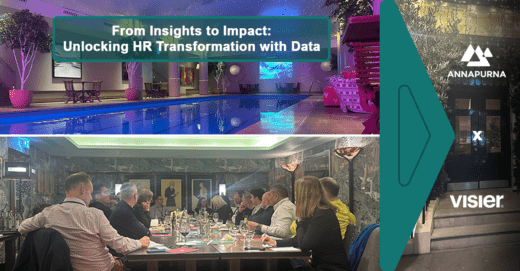In today’s world, it is emerging tech that enables companies to cut operating costs, boost productivity and deliver the ultimate customer experience. Artificial Intelligence is one of these game-changing tools and currently tops Gartner’s Strategic Technology Trends list. How to leverage the power of AI for business growth – and is the game actually worse the candle?
Artificial Intelligence advances (and what makes us think AI is ready for business)
Over the course of six years – namely, since IBM Watson’s infamous 2011 win in Jeopardy – Artificial Intelligence has become a poster child for IT experts, top tech websites and politicians. Guess why?
Smart computers and apps have developed an astonishing ability to crunch tons of data down to something meaningful and make decisions based on well-documented facts rather than subjective conclusions.
Here’s an example. In order to keep up with the latest medicine news a human doctor would have to read case studies and reports 160 hours a week. That’s almost 24/7. As a result, only 20% of the data applied by well-trained physicians is trial-based – and that’s why IBM Watson is already 40% better at detecting cancer than human doctors.
What is AI really good at?
- Speech recognition. Since 2016, the error rate of AI-powered transcription software has decreased by almost 4% (4.9% compared to 8.5% a year ago). Cortana, Siri, Alexa and Google Assistant can now easily book a flight to New York and tell you how to get to a bus terminal. Although Facebook had to shut down its Bob and Alice experiment after the two chatbots had invented their own language, the platform now boasts over 100 thousand e-commerce, banking and entertainment bots that navigate users through online catalogs and complex transactions and create unique customer experience;
- Image recognition. Popular face-morphing and editing apps including Snapchat, MSQRD and FaceApp are powered by neural networks. AI algorithms couldn’t stay away from the “Puppy or Muffin” 2016 challenge and achieved an impressive score (95.8% accuracy). Also, AI-powered vision systems process the data generated by cameras and proximity sensors to operate self-driving vehicles without manual intervention;
- Data-based problem solving. Besides Watson, there’s the narrow AI Alpha Go computer that beat a professional Go player last year. Google has recently implemented its Deep Mind AI to reduce power consumption in data centers by 15%. PayPal, one of the world’s biggest Internet payment companies, makes use of machine learning algorithms that mine customers’ purchasing history to detect fraud. Similar technologies may soon be implemented by top Wall Street traders.
How Can Your Business Benefit from AI?
AI has drastically changed software developing processes, too. Up till now, vendors used to apply existing knowledge to coding and programmed applications to solve particular problems. The thing is, we still don’t know how human brain works and therefore can’t teach a computer program things we take for granted (the phenomenon is known as Polanyi’s Paradox).
A modern AI algorithm (or deep neural network) can learn from examples: all you have to do is feed data to it. Artificial neurons process the data, assign weights to it and produce outcomes based on various factors. The more data you put through a neural network, the smarter it gets.
Although we’re still a few years away from computers and software that display general intelligence across multiple domains (i.e., understand Dutch and navigate Amsterdam), Artificial Intelligence now comfortably beats human workers at specific tasks. The question is, can a small- or medium-sized company compete with IT tycoons like Amazon and Google and use business AI solutions? Sure – and here’s how.
Real-world Artificial Intelligence applications in business
You run a Magento online store with 40 thousand products on your catalog. You’ve also built custom apps (iOS, Android) to target smartphone users and consider developing a mobile-based customer loyalty program. After three years in the industry, you’ve got listed as one of 110 thousand e-commerce brands that generate over $ 1 million in annual revenue. Things aren’t looking bad – but there’s always room for improvement: after all, by the end of the third year most of the revenue generated by top-performing e-commerce companies comes from repeat purchases – while you’re still trying to figure out how to boost customer retention. How can AI help you solve business challenges?
The use of Artificial Intelligence in business drives changes at three levels:
- Tasks and occupations (machine vision systems identifying cancer cells or chatbots automating customer service operations);
- Business processes (robots/supply chain management algorithms utilized at Amazon fulfilment centres);
- Business models (AI-powered systems that recommend products and services to customers in a personalized way).
Provided you address a reliable mobile/web application development company with the relevant experience, you can leverage AI for:
- Product recommendations. Having tracked every movie, CD and book customers purchased for almost a decade, Amazon developed a powerful machine learning algorithm that knows what customers like and comes up with personalized product recommendations. The company went on to launch its Amazon Machine Learning Service (which is part of the AWS cloud suite) to enable any e-retailer to build their own recommendation engine. You surely use Magento sales tracking software, don’t you? Now you can address an experienced vendor to create an AWS-based recommendation algorithm or build one from scratch! According to Harvard Business Review, you don’t even need much data to embark on your first AI project: it takes some time to polish an AI algorithm anyway, so the sooner you start, the better;
- Customer data analytics. As a successful e-retailer, you have access to large volumes of customer data coming through e-commerce plugins, mobile apps and customer loyalty program (add beacons if you combine bricks and clicks). The trouble is, 80% of digital data is unstructured and pretty much useless (unless you have the right technology to transform it into valuable insights). AI is the very tool you need. Infinite Analytics, the MIT-based startup that designed a predictive analytics platform powered by machine learning algorithms, helps companies predict whether a user will click on a particular ad or buy a particular product. The platform retrieves customer data from multiple sources including Shopify POS solutions, social media accounts and CRM systems. One of Infinite Analytics’ clients (a prominent e-commerce company from Brazil) saw a $ 125 million increase in annual revenue! You no longer underestimate the power of data, do you?
- Workflow optimization. Ocado, a British e-retailer that has been voted the best UK online supermarket by Which readers for 7 years in a row, has built a sleek AI algorithm based on Google’s open source TensorFlow API, Python and C++. The smart program scans customer emails, searches for relevant keywords, prioritizes the letters and forwards them to customer support specialists. A similar solution is implemented by Udacity, an online education company that specializes in vocation courses for professionals. The company implemented machine learning algorithms to analyze the data on call centre employee performance and design replies that would most likely lead to successful transactions. The insights enabled Udacity to boost the efficiency of their sales department by 54% – and serve twice as many customers! Although AI will by no means replace human workers in the near future, smart algorithms can automate routine cognitive processes that take a lion’s share of your employees’ time and efforts and notice data patterns hidden to human eyes.
Putting AI to work
The modern AI landscape is currently dominated by supervised machine learning systems. Such systems take data (let’s say, pictures displaying occupied and vacant parking spots) as an input, compare it to the images that have already been processed and generate an output – that is, a signal indicating whether a particular parking space is free or taken. It takes several thousand (sometimes million!) images labelled with correct answers to teach an AI algorithm. Once the initial training is complete, a developer lets the system study new data on its own – and that’s when a simple neural network evolves into a deep one.
Although AI development is considered innovative and can only be carried out by senior developers and software architects, the number of companies familiar with Artificial Intelligence is growing rapidly. With so many machine learning structures available via the cloud, you don’t have to build everything from scratch, do you?
Gil Pratt, CEO at Toyota Research Institute, has recently compared Artificial Intelligence to the Cambrian Explosion which gave birth to a multitude of new species and life forms. Similarly, Artificial Intelligence fuels the development of new products and services; it’s no wonder 83% of CEOs have already shared plans to use AI in sales and marketing! Only businesses which can promptly identify new tech trends and respond to new opportunities will thrive in the AI era.
This article is reposted from here as part of the partnership between R-Style Lab and the Business Transformation Network.




